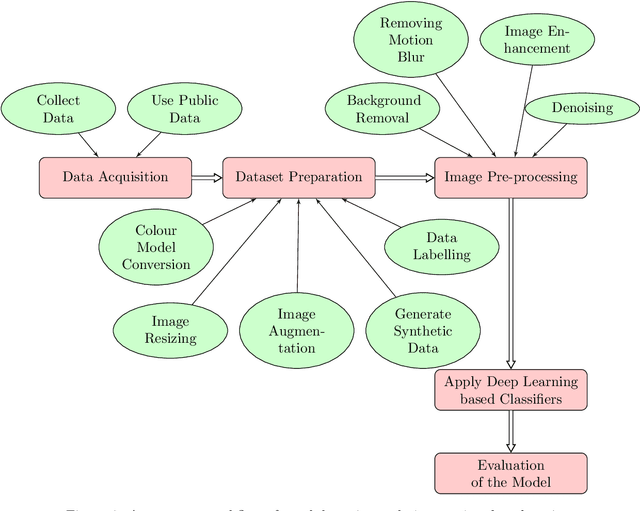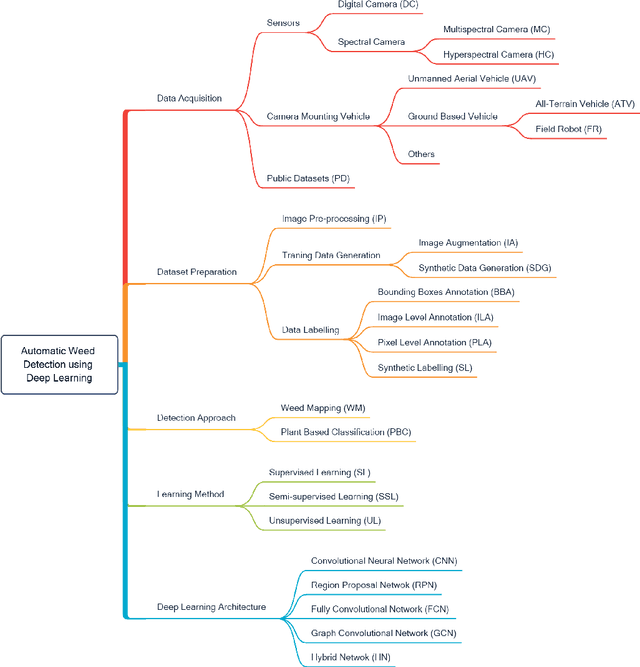A Survey of Deep Learning Techniques for Weed Detection from Images
Paper and Code
Mar 02, 2021



The rapid advances in Deep Learning (DL) techniques have enabled rapid detection, localisation, and recognition of objects from images or videos. DL techniques are now being used in many applications related to agriculture and farming. Automatic detection and classification of weeds can play an important role in weed management and so contribute to higher yields. Weed detection in crops from imagery is inherently a challenging problem because both weeds and crops have similar colours ('green-on-green'), and their shapes and texture can be very similar at the growth phase. Also, a crop in one setting can be considered a weed in another. In addition to their detection, the recognition of specific weed species is essential so that targeted controlling mechanisms (e.g. appropriate herbicides and correct doses) can be applied. In this paper, we review existing deep learning-based weed detection and classification techniques. We cover the detailed literature on four main procedures, i.e., data acquisition, dataset preparation, DL techniques employed for detection, location and classification of weeds in crops, and evaluation metrics approaches. We found that most studies applied supervised learning techniques, they achieved high classification accuracy by fine-tuning pre-trained models on any plant dataset, and past experiments have already achieved high accuracy when a large amount of labelled data is available.
 Add to Chrome
Add to Chrome Add to Firefox
Add to Firefox Add to Edge
Add to Edge